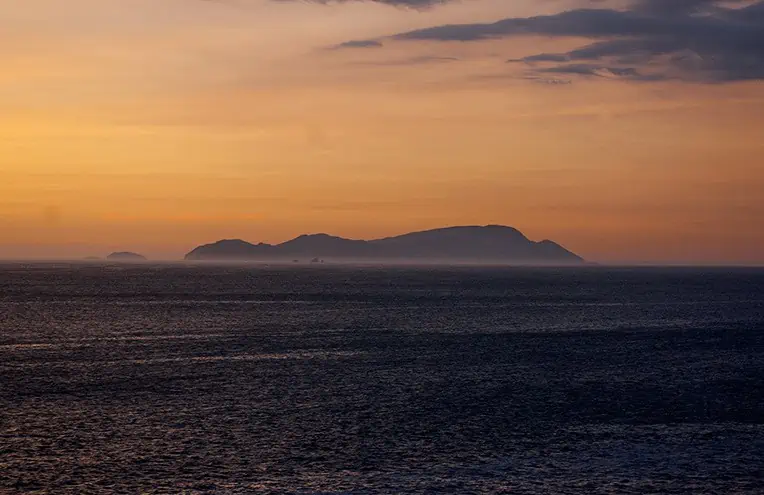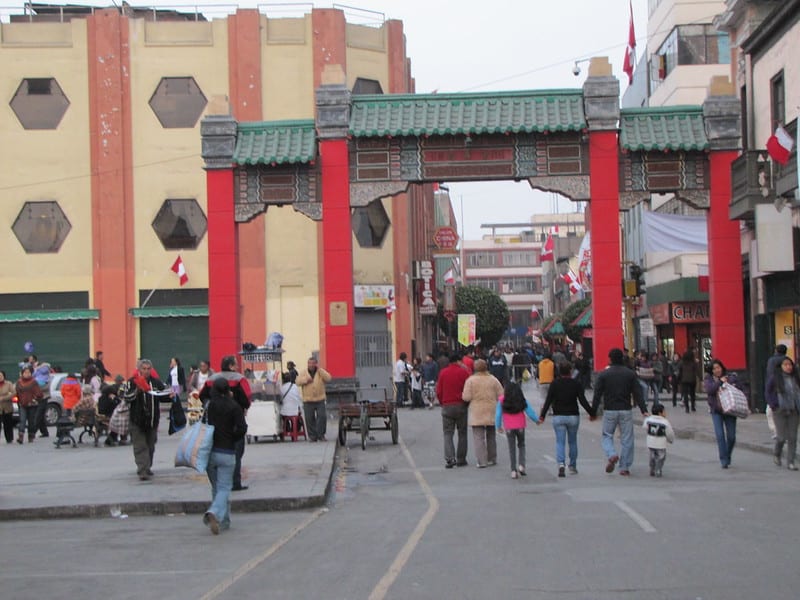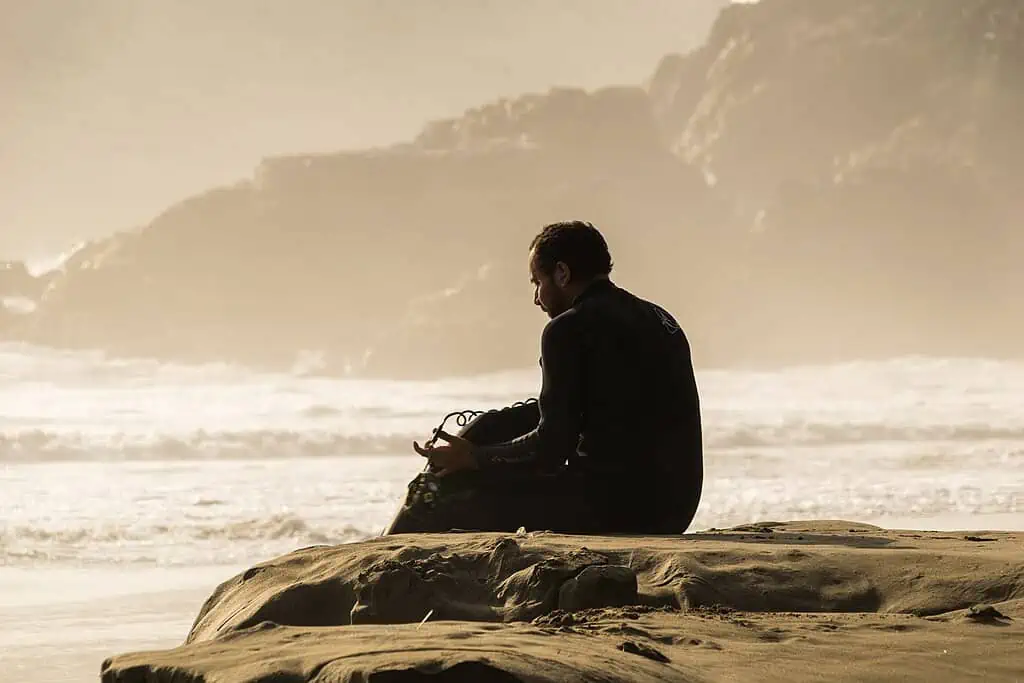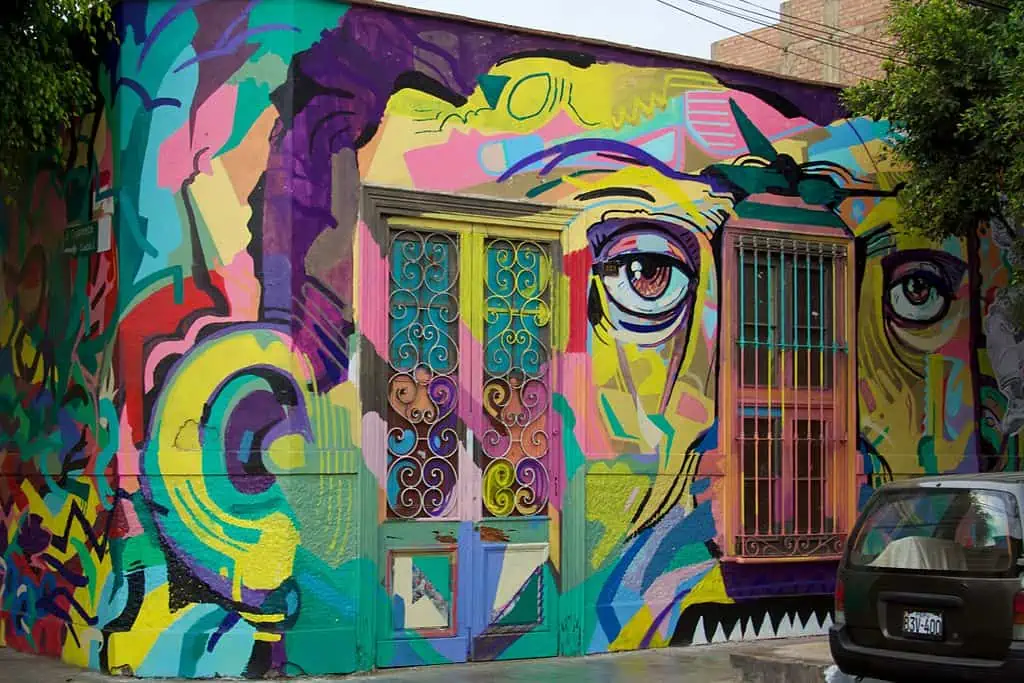
Nestled on Peru’s Pacific coast, Lima’s sprawling nature has earned it the nickname, “El Pulpo” (the Octopus). Known worldwide for its fascinating history, eye-catching architecture and world-class cuisine, Lima’s urban spread means that adventurous visitors will find a wealth of opportunities to get to know a more unusual side to the city. From coastal hideaways to vibrant street art, the seven places below provide an escape from the hubbub of Lima’s vast metropolis.
The largest island in Peru, San Lorenzo lies a short boat ride away from the capital city. While its lack of freshwater means that the island was never permanently inhabited, it nevertheless has significant cultural and historical merit. Throughout the centuries, this speck of land served as a pre-Hispanic cemetery, a base for pirates during colonial times, a burial place for Spanish troops after the Battle of Callao in 1866 as well as a temporary prison in the 1990’s.
As of today, San Lorenzo is home to a naval base and unlisted marine bioreserve, and therefore, visiting the island is possible only with special permission. However, if you wish to have a glimpse of this forbidden land, several organized boat tours sail around it, departing daily from the port of Callao. During the tour, passengers are also given the opportunity to observe the island’s extensive colony of Humboldt penguins, who are accompanied by other seabirds, including pelicans, gannets and cormorants.
On their way to San Lorenzo, the boats also pass along Palomino Island, a rocky outcrop whose rugged terrain is teeming with thousands of sea lions. Intrepid passengers who wish to have a close encounter with these adorable critters can snorkel or even scuba around the island. Take note that as the area is notorious for its choppy and cold waters, this adventure is definitely not for the faint hearted.

The silhouette of San Lorenzo Island as viewed from afar
photography by: Fotoves/ Wikimedia Commons
Between the districts of Rímac and San Juan de Lurigancho, Cerro San Cristóbal is part of the isolated hills of the Andes mountain range. Topped by a sacred cross, about 300 meters above sea level, the place has gradually evolved into a popular destination for Catholic pilgrimages. Nonetheless, with a glut of sweeping panoramas, the hilltop has a lot to offer to non-believers too. In fact, when the sky is clear, the view from the peak stretches as far away as the beaches of Chorrillos, La Punta and San Lorenzo Island.
It can be accessed by taking a small “urbanitos” bus from the city center or alternatively, by walking from the Rímac area. While it is a popular biking route, the ascent is not easy; the best route is to enter through Pasaje los Descalzos and then take Calle Cabildantes.

Pilgrims on their way to the sacred top of Cerro San Cristóbal
photography by: Rosario Seminario/ Wikimedia
One of the largest and most well-established Chinatowns in South America is located in the heart of Lima. This Asian enclave can trace its roots back to the late 1800’s, when Chinese immigrants first arrived to Peru as contract laborers, bringing with them their traditions, customs and cuisine. Over time, their heritage became an integral part of Lima’s cultural tapestry, making the neighborhood a bustling melting pot where Chinese and Latino cultures are fused together.
Among the most recognizable landmarks in Chinatown is the Arch of the Dragons. This ornate gateway, adorned with intricate Chinese designs, welcomes visitors to the vibrant neighborhood. In Lima’s Chinatown, you will also find temples, markets, restaurants and the Chinese Cultural Center, locally known as Casa Fong.

The Paifang of Lima’s Chinatown
photography by: The Paifang of Lima’s Chinatown
Located in Ventanilla, just north of Lima, Pachacutec Beach is a popular spot among local surfers who dot the wavy waters. For those seeking less of an adrenaline rush, the area around the beach is home to several ecological reserves and wetlands.
Birdwatching and guided nature walks are only some of the available activities for those looking to connect with nature and observe the region’s unique ecosystems. It is also an ideal place to simply relax and observe life in the local fishing community. The viewpoint at Mirador Playa Pachacutec offers a unique vantage point over the entire area, with its extensive views of the beach and Callao Bay.

A surfer taking a break on the backdrop of Playa Pachacutec
photography by: Jeampierre castillo/ Wikimedia
Perching atop a verdant hill in the busy district of Surco, Loma Amarilla Ecological Park has served multiple purposes over the years. Given its strategic location, it housed the surveillance post in the battles of San Juan and Miraflores in 1881, during the War of the Pacific with neighboring Chile.
In contrast to its tumultuous past, the place now provides a quiet green space for joggers, dog walkers and fitness enthusiasts who engage in open-air workout at the outdoor gym, easily earning itself the nickname “The Lungs of Surco”. The park covers 7.5 hectares of land and has a 12.4-kilometer (7.7 miles) walkway, suitable for running as well. Along the route, there are several intricately cut hedges, most notably an impressive multi-colored elephant.

The park’s entrance
photography by: Cheffirito/ Wikimedia Commons
The archaeological site of Huaca Huantille is an ancient pre-Inca site located in the district of San Juan de Lurigancho, east of Lima. This complex, formerly a religious and administrative center, offers visitors a fascinating glimpse into Peru’s rich heritage with several restored pyramids, platforms and ceremonial spaces. Originally built by the Ishma culture (900-1450 AD) after the fall of the Wari empire, the site was later occupied by the Incas (1450-1532 AD). The main focal point of the area is the central pyramid, where visitors can climb the steps for panoramic views of the surrounding area.
Adjacent to the archaeological site, there is a museum and interpretive center that provides further context and information about Huaca Huantille and the Wari civilization. The exhibits showcase artefacts discovered during excavations, such as pottery, textiles, tools and evidence of animal offerings and agricultural products, giving visitors a deeper understanding of the ancient culture and its significance.

Huaca Huantille’s ancient terraces with the narrowly spaces buildings of Lima in the background
photography by: Mayumitorrestin/ Wikimedia Commons
Barranco is a bohemian neighborhood in Lima, renowned for its vibrant street art scene. Festivals such as “Latido Americano” and “Barranco Libre” have transformed the place into a living art gallery, attracting art enthusiasts from all over the world. Some of the most prominent spots for street art in Barranco include Calle Pedro de Osma, the Malecon (boardwalk), and various hidden alleys and corners. From political and social commentary to abstract designs and intricate portraits, the murals reflect the diverse perspectives and artistic talents of local and international artists.

One of dozens of murals across Barranco
photography by: McKay Savage/ Wikimedia Commons